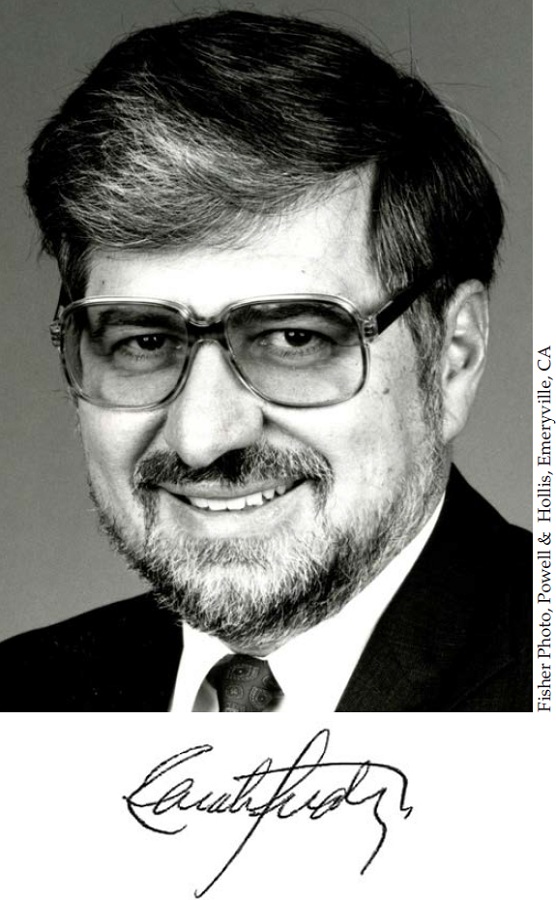RENATO FUCHS
1942–2015
Elected in 1994
“For engineering contributions in the design, construction, and operation for large-scale manufacturing of recombinant DNA proteins.”
BY STEPHEN W. DREW1
RENATO FUCHS, industry leader in the scaleup and manufacture of recombinant DNA pharmaceuticals and former senior vice president at Centocor Inc., Chiron Corporation, and other biotechnology companies, died September 7, 2015, at the age of 72.
He was born November 24, 1942, in the Castelnuovo Don Bosco, a commune in the province of Asti in the Piedmont region of Italy, to Mirko Fuchs of Zagreb, Croatia, and Leopoldina Pregelj of Trieste, Italy. Shortly after his birth his parents moved the family to Switzerland, and at the end of World War II they returned to what had become Yugoslavia. They moved again, when Renato was 7, to the new nation of Israel, and 5 years later settled in Cali, Colombia, where he spent his adolescence and early youth.
He attended Santa Librada High School and then the Universidad del Valle, both in Cali, with a year of study as a science foreign exchange student at Oakland University in Rochester, Michigan. He graduated from the Universidad del Valle in 1967 with a bachelor of science in chemical engineering
___________________
1 The author appreciates contributions from Daniel I.C. Wang (MIT), Arnold L. Demain (MIT and Drew University), and Charles L. Cooney (MIT).
and a research thesis on production of single-cell protein growing on molasses.
He continued his studies at the Massachusetts Institute of Technology, enrolling in the new program of biochemical engineering (Course 20), with Daniel I.C. Wang. He completed his master of science in 1969 with a dissertation on the growth of thermophilic bacteria on normal alkanes, and went on to earn his PhD in biochemical engineering in 1974 with a thesis on the “Utilization of mixed substrates by mixed cultures in continuous culture.”
The first 14 years of his career were at Schering-Plough Corp., in Union, New Jersey. He was responsible for the design, commissioning, and startup of two antibiotic manufacturing plants for offshore production in Brazil and Mexico. He also designed the first large-scale recombinant DNA production facility in New Jersey for the manufacture of alpha interferon; the production technology was subsequently transferred to Schering-Plough’s manufacturing plant in Ireland. Alpha interferon is used to treat cancers such as melanoma, hairy cell leukemia, and Kaposi’s sarcoma as well as viral infections such as hepatitis B and hepatitis C, with annual worldwide sales of $1.5 billion.
At Schering-Plough Dr. Fuchs earned a worldwide reputation as an expert in the large-scale manufacture of proteins under rigorous good manufacturing practice (GMP), required to conform to the guidelines of agencies that control authorization and licensing for the manufacture of active pharmaceutical products and drugs.
In 1988 he joined Centocor Inc. (in Malvern, Pennsylvania), where he was responsible for the design and operation of a large-scale cell culture manufacturing plant. He introduced one of the first large-scale applications of perfusion bio-reactors and was a leader in assembling the multidisciplinary team that saw monoclonal antibodies as human therapeutics through clinical trials and then to commercial manufacture at multikilogram quantities. His wife noted that in the last years of his life he was consulting for two biotechnology companies in Mexico and Colombia.
His publications and presentations on the design and scaleup of mammalian cell culture and production of monoclonal antibodies are benchmark contributions and his insights continue to influence biological process design.
In 1993 he moved to one of the largest biotechnology companies at the time, Chiron Corp. (Emeryville, California), as senior vice president of biopharma operations and process development, responsible for manufacturing plants and development laboratories in Emeryville and Vacaville, CA, as well as St. Louis, Puerto Rico, Amsterdam, Marburg (Germany), and Siena (Italy). During his tenure, Chiron greatly expanded capacity for manufacturing newly approved drugs such as Betaseron for the treatment of multiple sclerosis, and Menjugate, a vaccine to prevent meningitis C, as well as drugs and vaccines in development and clinical studies worldwide.
After leaving Chiron in 2002, he returned to the Boston area and held senior positions at several biotech companies—Transkaryotic Therapies, Shire Human Genetic Therapies, and Altus Pharmaceuticals, all in Cambridge. He became a consultant to the international biopharmaceutical industry in 2007. He was also a member of the board of directors of Auxilium Pharmaceuticals and of several scientific advisory boards for academic programs and startup companies.
Renato’s most impressive skills lay in his ability to observe and analyze complex technical systems and, quite often, to ask precisely the right question at the right moment to unblock insight and enable his colleagues. We already miss this gift from Renato.
He was also inclusive, warm, and friendly. He always had time for conversation, or encouragement, or to host a gathering to establish connections among his friends and peers. He was admired by his fellow graduate students and later by faculty members at MIT. He became well known for his fantastic parties that brought faculty, students, community members, and a range of international figures, including diplomats, together to enjoy dining, music, and landmark conversation.
Throughout his career he opened doors for MIT graduates and provided them their first job in industry. He maintained
close and fluid communication with MIT professors as well as industry contacts, fellow students from graduate school, and friends and families from around the world, and continued to host the social events that strengthened ties and sharing insights across many dimensions.
Though brilliant and committed to landmark accomplishment, Renato was unassuming; he was focused on those around him. He had substantial professional and personal impact on his colleagues, friends, and family, and will be greatly missed.
He is survived by his wife, Pubenza Valderruten Peters, sons Alex and Robert, and sister Jenny.







